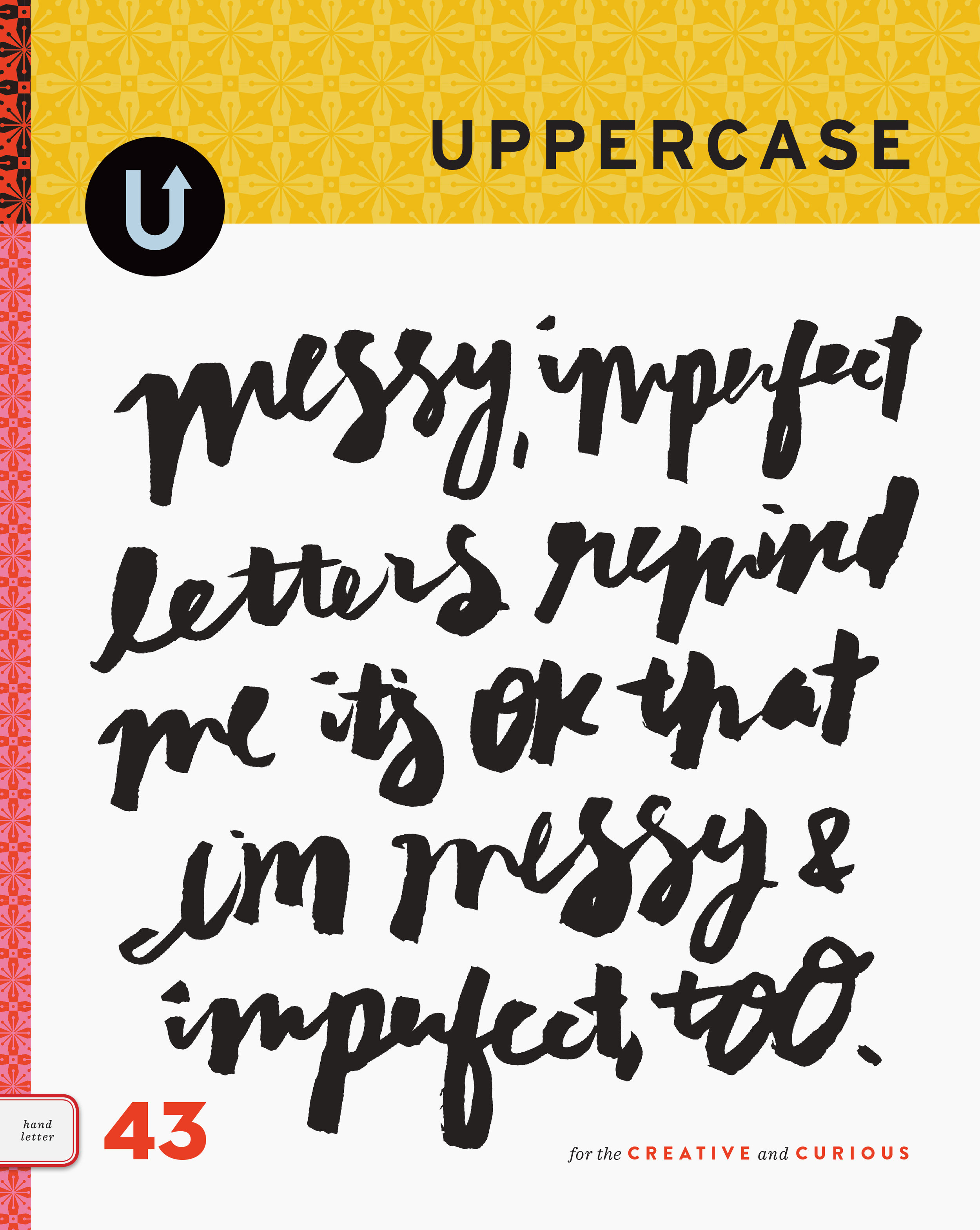Carolyn Fraser at agIdeas, Melbourne
/UPPERCASE's Melbourne Correspondent at agIdeas
agIdeas is celebrating its twentieth year as an international design conference in Melbourne this week. I was happy to attend a few sessions at Janine's invitation – UPPERCASE is a supporting partner, and MagNation are featuring the magazine prominently at both the conference location and at their Elizabeth Street store.
In a former life, I was an anthropologist – an ideal qualification for attendance at a design conference. In their natural habitat, designers talk to other designers, and strategise about ways to talk to non-designers. The "ideas" part of design can dominate the conversation or be completely obscured. Some presenters forget that they are not simply pitching potential clients; others betray their fawning deification of celebrity. Some talk down to students (who largely constitute the audience.) But others are so refreshingly committed that it both made me want 1. to move to Amsterdam and 2. to "save good women from bad design."
I attended a session called agIdeas In Conversation on which the panelists didn't talk to each other nor were the audience invited to ask questions. I did learn however about the Gnomon School of Visual Effects, an amazing-sounding industry-based school in Los Angeles, and about Smart Design, the venerable industrial design firm responsible for the design of everything from breakfast to cars, often on the same day. Asked what they imagined they'd grow up to be, visual merchandiser Amanda Henderson answered, origami expert, and Alex Alvarez answered, astrophysicist. Dan Formosa, from Smart Design, told a story about seeing a poster for the BMW Isetta, an innovative 1960's-era bubblecar, and his sudden realisation that things didn't have to be the way they always were.
At agIdeas Advantage, a business breakfast session focussed on showing how businesses can employ design to reach women, my hackles rose as soon as I heard talk about "using" design in purely marketing terms. The presentation by Jane Waterhouse, communications expert, about the "unbiased, factual science" that guides her marketing to the "world's biggest niche market" incensed me. Waterhouse suggested to the room of business executives that women like "unusual fonts", fonts that are "informal and fun, particularly those that are hand-scripted." I'm not sure if I was cringing more as a woman or as a typographer.
But Agnete Enga, from Smart Design, gave a wonderful presentation about her company's focus on the unique perspective women provide as both industrial designers and consumers. She insists that being female is not niche. Her company opposes the "shrink it or pink it" school of gendered design, and showed slides of an amazing early example of this kind of marketing – the Dodge La Femme, a pink car that came complete with matching make-up case, umbrella and rainboots. Agnete's goal is to "save good women from bad design." Smart Design work toward socially responsible design: surgical tools that fit female surgeons hands and air-bags that are safe for pregnant drivers fit this mandate.
But the highlight of my brief time at agIdeas was Theo Jansen. Jansen is a self-described kinetic sculptor. As a child, he wanted to fly. Imperfect eyes kept him from becoming a pilot; instead, he trained as a physicist. Sometime in the 1980's, he began exploring algorithms generated by an early Atari computer. He used the electrical piping he'd played with as a child to build moving appendages following his algorithmic patterns. In combination, these appendages form moving sculptures he calls Strandbeest, or beach animals. On stage, he set a small beach animal in motion down an inclined table: a collective awwww..... reverberated throughout the auditorium. This work, which he described as his life's work, has engaged him for more than twenty years. At no point did he discuss their purpose, other than vague hopes they might be employed to avert erosion along the Dutch coast. He did not discuss them as art objects or prototypes for products. He talked of his beach animals with all the affection and care one has toward a beloved living creature. He rejects the idea that his is an unusual creativity; he has simply immersed himself in a minute examination of function. In doing so, he has brought into being objects so beautiful, so alive, that it's almost as if design had nothing to do with it.
Many thanks to Carolyn Fraser for her fine contributions to UPPERCASE magazine each issue and for her thoughts on the agIdeas conference.







